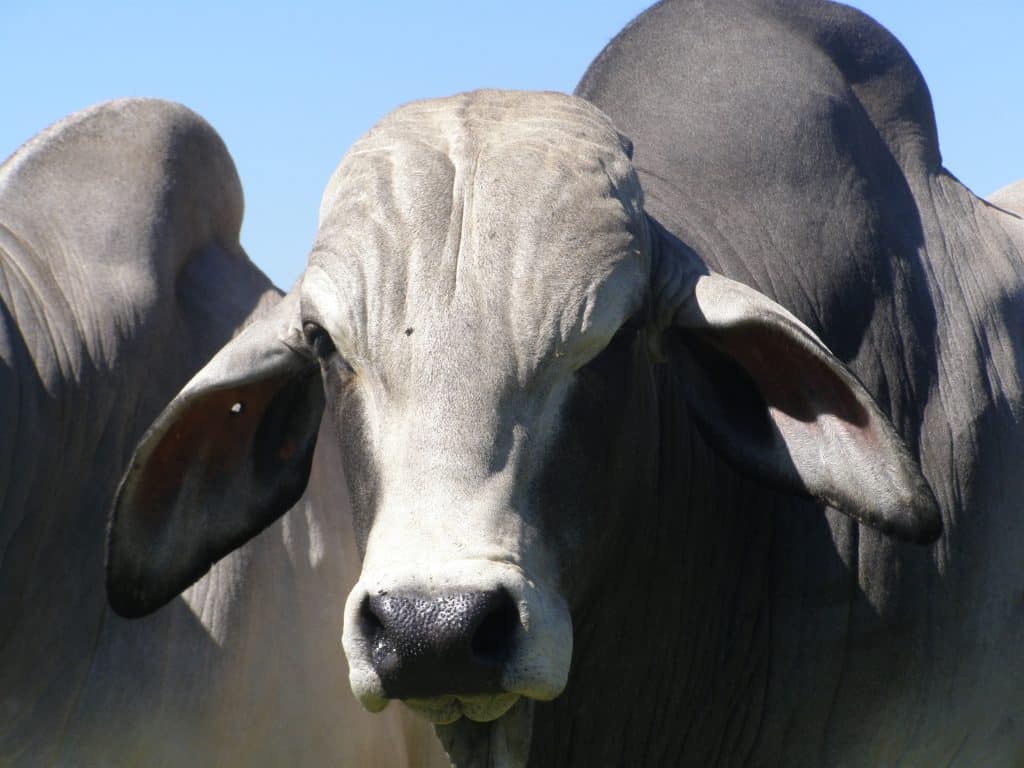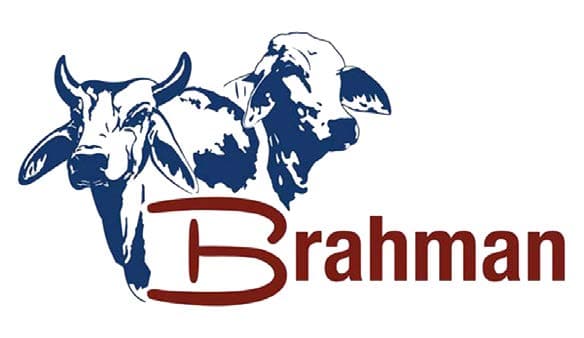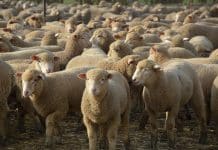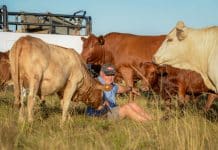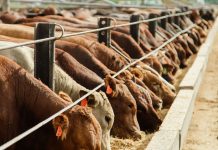
Estimated reading time: 5 minutes
- The Brahman is a hardy, well-adapted breed that can withstand high temperatures and is remarkably disease resistant with excellent mobility, which makes them suitable for farming throughout the country.
- The Brahman is used extensively in crossbreeding programmes and these animals are therefore invaluable in the commercial beef cattle market.
- When evaluating a Brahman bull, the first thing to look for is overall masculinity.
- With female animals it is all about femininity. The head must be feminine and short with a broad muzzle and fine features across the brow ridge.
- Similar to bulls, capacity in the midsection is desirable as Brahmans are beef cattle, and beef carrying ability is therefore a priority.
Zebu or Bos indicus cattle, of which the Brahman is part, originated in the Indian sub-continent. They are characterised by a distinct hump above the shoulders, a large dewlap and sometimes pendulous ears. The Brahman is a hardy, well-adapted breed that can withstand high temperatures and is remarkably disease resistant with excellent mobility, which makes them suitable for farming throughout the country.
The Brahman is used extensively in crossbreeding programmes and these animals are therefore invaluable in the commercial beef cattle market. Many of the synthetic breeds comprise of a percentage of Brahman, and many feedlots value the Brahman and Brahman crosses as feedlot cattle for their growth potential.
The Brahman bull
When evaluating a Brahman bull, the first thing to look for is overall masculinity. A masculine head has a broad muzzle, is broad between the brow ridge, and has a strong nasal bone and short profile. The head should give the impression of masculine strength. The neck should exhibit good definition of muscling with a well-defined hump directly above the shoulders.
Many bulls show a darkening of the skin around the shoulders, which is an indication of masculinity and good hormonal balance – this trait is highly desirable.
Looking at the midsection of the bull, it should exhibit a strong topline with good spring of rib. The primal beef cuts, such as the ribeye and T-bones, are cut from this section.
The hindquarter should be well-rounded and show good width, especially around the pinbones. In terms of legs, the hocks must be correct and have a slight curvature to them. Post-hocked (hocks that are too straight) animals are undesirable. On the other hand, an animal with sickle hocks (where the curve in the hock is too pronounced) is also not desirable.
The bone structure of the front legs must be sound and there must be good width in the chest floor. Hooves must be free of any genetic problems (e.g. corkscrew hooves). Moreover, hooves need to be evenly shaped and wear evenly and correctly.
The Brahman cow
With female animals it is all about femininity. The head must be feminine and short with a broad muzzle and fine features across the brow ridge. The dewlap of the neck should have fine pleats. Females must have a bean-shaped hump, which should neither be over- or underdeveloped, directly above the shoulders.
Similar to bulls, capacity in the midsection is desirable as Brahmans are beef cattle, and beef carrying ability is therefore a priority. For this, a strong, broad topline with good spring of rib, which provides volume in the stomach area for the digestive organs and enough space for a calf to develop properly, is needed.
A feminine cow should have a well-formed wedge shape. This means the cow should be deeper in the hindquarter and wedged towards the front (thus less depth towards the forequarter, but broadness towards the back).
The ideal is a 14-degree angle from hipbone to pinbone, which makes calving easier. A flat rump is very undesirable and could cause calving problems. The hindquarter should be round and broad.

As for the reproductive organs, teats should be small, pointed and evenly spaced on a well-developed udder. Large, bottle shaped teats are undesirable because calves will struggle to suckle on them. Cows with well-developed vulvas tend to be better reproducers than cows with smaller vulvas.
In terms of the underline, the navel must not be excessive but clean and neat.
A great deal of emphasis is placed on the mobility of cows. The correct curvature in the hind legs is crucial, as is straightness in the front legs and broadness in the chest floor, which will allow the cow to move comfortably over large distances in an extensive environment.
The overall picture of a good Brahman cow depicts femininity, good capacity, a distinct wedge shape and good mobility. These are the best performing cows in the industry.
Watch the videos in other languages:
- Uvavanyo lolwakhiwo lwenkunzi yeBrahman
- Uvavanyo lolwakhiwo lweenkomo zeBrahman
- Hlahloba ya sebophelo sa poho ea Brahman
- Hlahloba ya sebophelo sa kgomo ea Brahman
- Strukturele evaluering van ‘n Brahmanbul
- Strukturele evaluering van ‘n Brahmankoei
For enquiries, phone the Brahman Cattle Breeders’ Society on 051 446 4619/3452 or email info@brahman.co.za.

